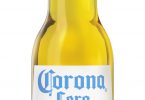Further falls in Irish alcohol consumption since WHO report’s 2010 stats, says ABFI
It also points out that alcohol consumption can not only lead to dependence but also increases people’s risk of developing more than 200 diseases including liver cirrhosis and some cancers. The report finds that harmful use of alcohol makes people more susceptible to infectious diseases too such as tuberculosis and pneumonia.
The Global status report on alcohol and health 2014 provides country profiles for alcohol consumption in the 194 WHO Member States, the impact on public health and policy responses.
Globally, Europe is the region with the highest consumption of alcohol per capita, with some of its countries having particularly high consumption rates. Trend analysis shows that the consumption level is stable over the last five years in the region, as well as in Africa and the Americas, though increases have been reported in the South-East Asia and the Western Pacific regions.
Irish alcohol consumption
According to the WHO report, Ireland’s consumers aged ‘15+’ had a ‘recorded’ average per capita alcohol consumption figure of 11.4 litres between 2008 and 2010, down from a 13.4 litre figure between 2003 and 2005. When added to the ‘unrecorded’ figure, it totaled 11.9 litres compared to the previous figure of 14.4 litres.
Within this, +15 males consumed an average of 14.4 litres to females 11.9 litres here compared to the WHO Euoropean average of 11.9 for males and 10.9 for females.
Excluding non-drinkers this figure rises to 14.7 litres in 2010 comprising 19.8 litres for males and 9.3 litres for females, according to the WHO which further breaks down the Irish per capita consumption figure into alcoholic beverage type.
At 48% beer is the most consumed alcoholic beverage type here followed by wine at 26%, spirits at 18% and ‘other’ at 8%.
The WHO report places Ireland at the mid-point between ‘least risky’ and ‘most risky’ in terms of drinking patterns in 2010.
Reducing harmful use of alcohol
“More needs to be done to protect populations from the negative health consequences of alcohol consumption,” says Dr Oleg Chestnov, WHO Assistant Director-General for Noncommunicable Diseases and Mental Health. “The report clearly shows that there is no room for complacency when it comes to reducing the harmful use of alcohol.”
Some countries are already strengthening measures to protect people. These include increasing taxes on alcohol, limiting the availability of alcohol by raising the age limit and regulating the marketing of alcoholic beverages.
The report also highlights the need for action by countries including:
• national leadership to develop policies to reduce harmful use of alcohol (66 WHO Member States had written national alcohol policies in 2012)
• national awareness-raising activities (nearly 140 countries reported at least one such activity in the past three years)
• health services to deliver prevention and treatment services, in particular increasing prevention, treatment and care for patients and their families and supporting initiatives for screening and brief interventions.
In addition the report shows the need for communities to be engaged in reducing harmful use of alcohol.
The report points to the fact that a higher percentage of deaths among men than among women are from alcohol-related causes – 7.6% of men’s deaths and 4% of women’s deaths – though there is evidence that women may be more vulnerable to some alcohol-related health conditions compared to men. In addition, the authors note that there is concern over the steady increase in alcohol use among women.
“We found that worldwide about 16% of drinkers engage in heavy episodic drinking – often referred to as ‘binge-drinking’ – which is the most harmful to health,” explains Dr Shekhar Saxena, Director for Mental Health and Substance Abuse at WHO, “Lower-income groups are more affected by the social and health consequences of alcohol. They often lack quality health care and are less protected by functional family or community networks.”
In response to the report, the Alcohol Beverage Federation’s Kathryn D’Arcy noted the WHO research and welcomed the opportunity to discuss the important societal issue with alcohol abuse.
“However, it’s important to note that this particular research was conducted in 2010 and since then, average per adult alcohol consumption has declined substantially – down a further 8.5% since this research was conducted,” she stated, “Average per adult consumption is now over 25% lower than the peak of 2001. We’re consuming alcohol at pre-1990 levels and are fast approaching EU norms.
“However, the report is correct is highlighting the high levels of binge-drinking. This is a particular concern to the alcohol industry and we are committed to addressing this and have sought to work with Government to affect long-term societal change to address harmful drinking in the same way as we did with drink-driving. This starts with:
* Addressing the sale of cheap alcohol
* Introducing a statutory ban on price-based advertising
* Introducing statutory codes to regulate the merchandising of alcohol
“We have worked hard as an industry to tackle misuse through strict codes of practice and regulatory standards. We hope the Government will allow us to continue to work hard to address the issue around misuse by taking part in a whole of society approach.
“The misuse of our products in no way benefits us as an industry,” she concluded.








